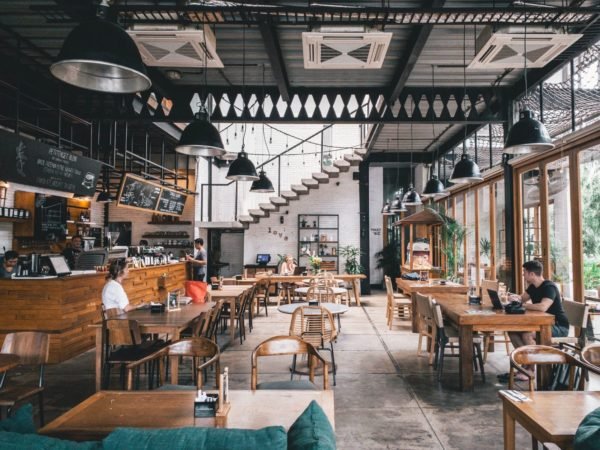Social work
Among the many ways to get back people into the office, `workplace hospitality' is often cited as the best way forward. But what does this concept mean exactly? And how should companies put it into practice?
As a visual and operational driver of experience, `workplace hospitality' certainly has the potential to transform office environments. By re-imagining workspace through the lens of hospitality with a core focus on service, comfort and convenience, companies can create vibrant destinations that engage and inspire their employees.
These are our top five design considerations for a successful back-to-office strategy:
Develop a compelling front-of-house proposition
Borrowing from the hospitality toolbox, a compelling front-of-house proposition is integral to successful workplace design. As the first point of arrival and interaction within a building, the workplace reception area is an opportunity to greet clients and staff in a way that makes them feel valued.
In particular, companies need to look beyond the traditional role of `the receptionist'. Sat behind a desk and screen, this figure has historically presented a barrier to engagement. By recruiting a dynamic host or concierge, employers can shift away from this model to deliver a memorable front-of-house experience.
In China and India, for example, companies are taking on ex-hospitality staff, to welcome, engage and interact. They're usually standing, out from behind the desk and provide an exceptional hospitality service and curated, customised experience for every member of staff, as well as clients, as they cross the corporate threshold.
Build back-of-house capabilities
In order to deliver a compelling front-of-house proposition, companies need to build robust back-of-house capabilities as service is enabled by an intricate and well-functioning back-of-house. In hospitality, F&B and high-end retail, it’s the back-of-house that supports the service excellence that generates customer footfall.
By borrowing from cross-industry examples, employers can begin to provide compelling `reasons to return'. Personal storage space, food staging areas, or drop-off zones for Deliveroo drivers, for instance, are all back-of-house enhancements that could significantly improve employees' day-to-day experience. Yes, physical design interventions are important, but it's strong service provision, supported by back-of-house operations, that will be the major draw for employees.
Prioritise the needs of the end-user
Successful hospitality design is about prioritising the needs of the end-user. And in the context of the post-covid workplace, the needs of the end-user are many, multifaced, and neurodiverse.
For those craving human contact and connection, open-plan spaces and communal areas will be key. Equally, for those who’ve grown used to the peace and quiet of remote working, privacy will be crucial. By designing for both introvert and extrovert character types, companies can enable a more positive workplace experience for their key assets.
For neurodivergent employees in particular, employers need to consider the sensory distractions and spatial configurations that can present barriers to productivity. Certainly, the issue of `contamination' of personal space, which has been amplified by the pandemic, will need to be addressed to ensure a healthy and happy workforce going forward.
Focus on opex, not capex
For too long, companies have focused on capital expenditure in their efforts to transform office environments. But designer desk-lamps and wingback chairs aren’t the answer. By focusing first and foremost on operational aspects, employers can begin to create a workplace environment that fully supports and serves the employee.
Whereas capex provides temporary `sticking plaster' solutions, it’s opex – targeted investment in operations, human resources and facilities management – that really `makes things happen' over the long term. Similarly, opex in sustainability can further enhance workspace performance, driving efficiency gains through innovations such as motion-sensor lighting and aircon. These gains in turn deliver financial savings, freeing up additional funds for investment in the employee experience.
Create a powerful brand experience
Increasingly, employees are looking for their physical workspace to provide a powerful and positive brand experience. Cultural fit is paramount, with younger employees in particular wanting to work for purpose-driven companies that share and reinforce their worldviews. In short, for many employees, workspace has to ‘feel right’.
Through brand-led placemaking, interior design can help to create that sense of place and identity, reflecting values that resonate with employees. ESG compliance, for example, can be reflected in physical spaces through the use of sustainable materials and efficiency-driven systems. Enabling employers to `walk the talk', this approach ensures workspace connects to commitments, helping to engage and inspire environmentally conscious employees.
Brand-oriented design also brings workspaces to life, helping employees to feel more connected to the space around them – and therefore more compelled to interact with it. It also enables designers to create a strong, unifying narrative of place; a coherent story and experiential journey that deepens people's sense of belonging.
Claire Stephens
Jon Grant

